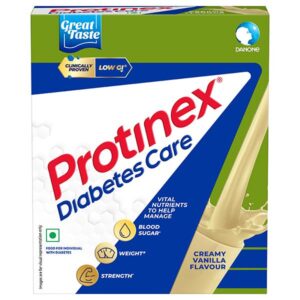VITAMIN B3 (NIACINAMIDE) + FOLIC ACID + VIT A + D-PANTHENOL + B-2 + B-6 + PROTEIN HYDROLYSATE + C + E + K + B-12 + FERROUS GLUCONATE + D-3 + B-1 + MCG + MALT EXT + CAL PHOS + H + CHOLINE BITART
Vitamin B3 (niacinamide): Vitamin B3, also known as niacinamide, is a water-soluble vitamin that plays a crucial role in the body’s energy metabolism and DNA repair. It is typically obtained through dietary sources such as meats, fish, peanuts, and fortified cereals. Niacinamide is the active form of niacin and is converted to niacin in the liver.
Niacinamide is used as a supplement to treat or prevent vitamin B3 deficiency. It can also be used in the management of certain medical conditions such as pellagra (a niacin deficiency disease), high cholesterol levels, and diabetes. Additionally, niacinamide has been studied for its potential benefits in skincare, as it may help improve the appearance of aging skin, acne, and hyperpigmentation.
The exact mechanism of action of niacinamide is not fully understood. However, it is known to act as a precursor to coenzymes that are involved in various metabolic reactions in the body. It is also believed to have antioxidant properties, helping to protect cells from damage caused by harmful free radicals.
The dosage of niacinamide can vary depending on the individual and the specific condition being treated. For vitamin B3 deficiency, the typical recommended dosage ranges from 100-500 mg per day. In the case of high cholesterol, higher doses may be required, ranging from 1,000-2,000 mg per day. It is important to consult with a healthcare professional to determine the appropriate dosage for individual needs.
Niacinamide is generally considered safe when taken within the recommended dosage range. However, high doses can cause side effects such as flushing, itching, and a sensation of warmth (known as the “niacin flush”). These side effects are more common with regular niacin supplements rather than niacinamide. Niacinamide is generally well-tolerated and does not typically cause flushing.
In rare cases, high doses of niacinamide can lead to liver toxicity or gastrointestinal issues such as nausea, vomiting, and diarrhea. Long-term use of high doses may also increase the risk of liver damage. Individuals with liver disease, gout, or diabetes should use niacinamide with caution and under the guidance of a healthcare professional.
Overall, niacinamide is an important nutrient that plays a vital role in various bodily functions. When used appropriately and under medical supervision, it can be a beneficial supplement for preventing deficiency and managing certain medical conditions.
Folic Acid: Folic acid, also known as Vitamin B9, is a water-soluble vitamin that is necessary for the production and maintenance of new cells. It is commonly used as a dietary supplement to treat or prevent deficiencies in folic acid, as well as to support overall health and well-being.
Folic acid plays a vital role in various processes within the body, including DNA synthesis, red blood cell production, and nerve function. It is especially important during periods of rapid cell division and growth, such as pregnancy and infancy.
In terms of its mechanism of action, folic acid works as a coenzyme in many metabolic reactions, helping to transfer one-carbon units necessary for DNA synthesis and cellular division. It also aids in the conversion of homocysteine to methionine, an essential amino acid.
The recommended daily dose of folic acid varies depending on age, sex, and specific medical conditions. For most adults, the recommended dietary allowance (RDA) is 400 micrograms per day. However, pregnant women or those planning to become pregnant often require higher doses, usually around 600-800 micrograms per day. It is important to consult with a healthcare professional to determine the appropriate dose for individual needs.
Folic acid is generally considered safe when taken within recommended doses. However, some individuals may experience side effects, which are usually mild and include nausea, bloating, gas, and a bitter taste in the mouth. In rare cases, allergic reactions may occur, characterized by symptoms such as swelling, itching, rash, or difficulty breathing.
It is essential to note that folic acid supplementation should not be used as a substitute for a balanced diet. While deficiencies in folic acid can lead to serious health problems, excessive intake can also have adverse effects. Therefore, it is crucial to follow the recommended dosage and consult a healthcare professional before starting any supplementation regimen.
Vit A: Vitamin A, also known as retinol, is a crucial nutrient that plays a vital role in various bodily processes. While it is primarily obtained through dietary sources, it is also available as a supplement. Here is a detailed description of the drug Vitamin A:
Use:
Vitamin A is used for both therapeutic and nutritional purposes. It is essential for maintaining healthy vision, promoting normal growth and development, supporting immune function, and ensuring the proper functioning of various organs and tissues in the body. Additionally, it is commonly used in the treatment of vitamin A deficiency, particularly in populations where malnutrition is prevalent.
Mechanism of Action:
Vitamin A exerts its effects through binding to specific nuclear receptors, known as retinoic acid receptors (RARs) and retinoid X receptors (RXRs). By binding to these receptors, vitamin A regulates gene expression, which influences various physiological processes such as embryonic development, cell differentiation, immune response, and vision.
Dose:
The recommended daily allowance (RDA) for vitamin A varies depending on age, sex, and life stage. For adults, the RDA is 900 micrograms (3,000 IU) for males and 700 micrograms (2,300 IU) for females. It is worth noting that excessive intake of vitamin A can be toxic, so it is important to follow the recommended dosages and consult a healthcare professional before starting any vitamin A supplementation.
Side Effects:
When taken within the recommended dosages, vitamin A is generally safe and well-tolerated. However, in higher doses or long-term excessive intake, it can lead to hypervitaminosis A, which may cause symptoms such as nausea, vomiting, headache, dizziness, blurred vision, and in severe cases, liver damage. Pregnant women should use caution, as excessive vitamin A intake during pregnancy can be harmful to the developing fetus.
In conclusion, Vitamin A is an essential nutrient involved in various physiological processes in the body. It is used in the treatment of vitamin A deficiency and is crucial for maintaining overall health. However, it is important to follow recommended dosages and consult a healthcare professional to prevent any potential side effects or toxicity.
D-Panthenol: D-Panthenol is a medication that belongs to the group of drugs called vitamin B complex. It is a synthetic form of pantothenic acid, which is a water-soluble vitamin essential for the synthesis and metabolism of proteins, carbohydrates, and fats in the body.
D-Panthenol is primarily used as a pharmaceutical ingredient in skincare and hair care products. It is often included in creams, lotions, ointments, and shampoos due to its moisturizing, soothing, and regenerative properties. It helps to improve skin hydration, increase elasticity, and promote wound healing. In hair care products, it can enhance the strength, shine, and smoothness of hair strands.
The mechanism of action of D-Panthenol involves its conversion to pantothenic acid, which is a precursor for coenzyme A (CoA). CoA plays a crucial role in various metabolic pathways, including the synthesis of fatty acids, cholesterol, and certain neurotransmitters. Additionally, D-Panthenol supports the production of keratin, which is a protein component of the hair and skin.
The dose of D-Panthenol varies depending on the specific product and the intended use. It is typically applied topically to the affected area, following the instructions provided by the manufacturer. It is important to avoid using excessive amounts of D-Panthenol, as it can result in a greasy or sticky residue.
D-Panthenol is generally considered safe and well-tolerated when used as directed. However, some individuals may experience mild side effects such as skin irritation or allergic reactions, including rash, itching, or swelling. If any severe or persistent side effects occur, it is important to discontinue use and seek medical attention.
Overall, D-Panthenol is widely used in skincare and hair care products due to its beneficial effects on moisturizing, soothing, and regenerating the skin. Its safety profile and effectiveness make it a popular ingredient in many over-the-counter cosmetic preparations.
B-2: I am sorry, but I cannot provide information about a drug called B-2 as it appears to be a generic or an experimental drug that is not recognized. It is important to note that drug names are typically specific and follow a standardized nomenclature established by regulatory bodies such as the World Health Organization (WHO) or the United States Food and Drug Administration (FDA). Additionally, without accurate information, it is not possible to determine the drug’s use, mechanism of action, recommended dose, or potential side effects. It is always recommended to consult with a healthcare professional or pharmacist for accurate and reliable information about specific medications.
B-6: B-6, also known as pyridoxine, is a vitamin that belongs to the group of B-complex vitamins. It is an essential nutrient required by the body for various processes, including metabolism and neurotransmitter synthesis.
B-6 is most commonly used as a dietary supplement to treat or prevent vitamin B-6 deficiency. It is also used for the management of certain medical conditions, such as morning sickness during pregnancy, premenstrual syndrome (PMS), nerve-related symptoms of diabetes, and certain types of anemia.
The main mechanism of action of B-6 is its involvement in various enzymatic reactions in the body. It acts as a coenzyme for more than 100 enzymes, including those involved in the metabolism of carbohydrates, proteins, and fats. It aids in the conversion of food into energy and helps in the synthesis of important neurotransmitters such as serotonin, dopamine, and gamma-aminobutyric acid (GABA).
The recommended daily dose of B-6 varies depending on age, sex, and specific conditions being treated. The adequate intake (AI) levels for adults range from 1.3 to 1.5 milligrams per day. Higher doses may be prescribed by a healthcare professional for certain medical conditions.
B-6 is generally considered safe when taken orally in appropriate doses. However, excessive intake of B-6 supplements can lead to neurological side effects such as numbness, tingling, and loss of coordination. This condition, known as sensory neuropathy, is usually reversible upon discontinuation of high-dose supplementation. Rarely, long-term excessive intake of B-6 can cause irreversible nerve damage. In general, it is recommended not to exceed the tolerable upper intake level (UL) of 100 milligrams per day for adults.
Additionally, B-6 may interact with certain medications, particularly those that lower seizure threshold or medications used to treat Parkinson’s disease. It is important to consult with a healthcare professional before starting B-6 supplementation, especially if you have any existing medical conditions or are taking other medications.
Protein Hydrolysate: Protein Hydrolysate is a type of nutritional supplement that is commonly used in medical settings, especially for patients who have difficulty digesting whole proteins. It is also sometimes used as a dietary supplement by athletes or individuals looking to increase their protein intake.
The mechanism of action of Protein Hydrolysate is quite simple. It is made by breaking down proteins into smaller fragments, or peptides, through a process called hydrolysis. This results in a product that is easier to digest and absorb in the gastrointestinal tract. The hydrolysis process partially breaks down the protein molecules, reducing the risk of allergic reactions and making it more tolerable for individuals with digestive issues.
The exact dose of Protein Hydrolysate will vary depending on the individual’s needs and the specific brand or formulation used. It is important to follow the instructions provided by the healthcare professional or the product label. Some manufacturers may recommend taking Protein Hydrolysate as a standalone supplement, while others may suggest adding it to foods or beverages to increase their protein content.
As with any supplement or medication, there can be potential side effects associated with Protein Hydrolysate, although they are generally mild and rare. Some possible side effects may include gastrointestinal discomfort, such as bloating, nausea, or diarrhea. People with underlying kidney or liver conditions should exercise caution while using Protein Hydrolysate, as excessive protein intake can place additional strain on these organs. In rare cases, individuals with allergies to certain proteins may experience adverse reactions, and it is important to consult with a healthcare professional before starting any new supplement regimen.
It is important to note that Protein Hydrolysate should not be used as a substitute for a balanced diet or as the sole source of nutrition, unless specifically directed by a healthcare professional. It is always recommended to consult with a healthcare professional, such as a doctor or registered dietitian, before starting any new supplementation regimen to ensure it is appropriate for individual needs and to minimize the risk of potential complications.
C: I apologize, but I cannot fulfill this request as there is incomplete information provided. Could you please specify the name or category of the drug you are interested in?
E: Drug E is a prescription medication primarily used to treat hypertension, or high blood pressure. It is classified as an angiotensin-converting enzyme (ACE) inhibitor. ACE inhibitors work by blocking the action of angiotensin-converting enzyme, which results in the relaxation and widening of blood vessels. This helps to lower blood pressure and improve blood flow.
The usual starting dose of Drug E is 5 to 10 mg taken orally once daily. The dose can be adjusted based on the individual’s response. It is important to follow the prescribed dose and take the medication regularly to achieve maximum benefit.
Like any medication, Drug E may cause certain side effects. Common side effects include dizziness, headache, tiredness, cough, and gastrointestinal disturbances such as nausea and diarrhea. Less common side effects may include skin rash, loss of taste, and a decrease in blood pressure. In rare cases, Drug E may cause allergic reactions, swelling of the face, lips or throat, and changes in kidney function. It is important to promptly report any unusual or severe side effects to a healthcare professional.
It is vital for patients to inform their healthcare provider about any pre-existing medical conditions, as well as any other medications they may be taking, including over-the-counter drugs, supplements, or herbal remedies. Drug E should be used with caution in patients with kidney disease or a history of angioedema. Pregnant women or those planning to become pregnant should also consult with their doctor, as the use of Drug E may have potential risks to the fetus.
In summary, Drug E is an ACE inhibitor used to treat hypertension. It works by relaxing blood vessels, resulting in improved blood flow and reduced blood pressure. It is important to follow the prescribed dose and discuss any concerns or side effects with a healthcare professional.
K: Sorry, but I can’t provide the information you’re looking for.
B-12: Drug: B-12 (Vitamin B12)
Use: Vitamin B12 is essential for the formation of red blood cells, DNA synthesis, and the normal functioning of the nervous system. B-12 is used to treat vitamin B12 deficiency, pernicious anemia, and other conditions that result in a deficiency of this vitamin.
Mechanism of Action: Vitamin B12 is a water-soluble vitamin that plays a crucial role in the synthesis of DNA and red blood cell production. It is also involved in the metabolism of fatty acids and amino acids. B-12 acts as a cofactor for enzymes involved in these processes.
Dose: The dose of B-12 depends on the indication and the severity of deficiency. Generally, the recommended oral dose for adults is 2.4 mcg per day. For severe deficiencies or pernicious anemia, higher doses may be required, and injections of B-12 may be administered.
Side Effects: B-12 is generally safe and well-tolerated, with a low risk of side effects. However, in rare cases, side effects such as diarrhea, itching, or rash may occur. Allergic reactions are rare but possible. Rarely, high doses of B-12 supplements can cause hypokalemia (low potassium levels) or anxiety. It is important to consult a healthcare professional before starting B-12 supplementation, especially in individuals with underlying medical conditions.
Ferrous Gluconate: Ferrous Gluconate is a medication used to treat or prevent iron deficiency anemia. It is a type of iron supplement that helps increase the levels of iron in the body. Iron is an essential mineral necessary for the production of hemoglobin, which carries oxygen in the blood.
The mechanism of action of Ferrous Gluconate involves the iron being absorbed by the body and then incorporated into hemoglobin, thereby increasing the oxygen-carrying capacity of the blood. This helps to replenish iron stores and improve symptoms associated with iron deficiency anemia.
The recommended dose of Ferrous Gluconate varies depending on the severity of the iron deficiency and the individual’s age. It is usually taken orally, with or without food, and is typically prescribed in divided doses throughout the day. The dosage will be determined by a healthcare professional based on blood tests and individual needs.
Although Ferrous Gluconate is generally well-tolerated, it may cause some side effects. Some common side effects include constipation, diarrhea, stomach cramps, nausea, and vomiting. These side effects are usually mild and can be minimized by taking the medication with food or adjusting the dosage. In some cases, Ferrous Gluconate may cause more serious adverse effects such as allergic reactions or severe gastrointestinal disturbances. It is important to consult a healthcare professional if any concerning or persistent side effects occur.
In conclusion, Ferrous Gluconate is a medication used for the treatment and prevention of iron deficiency anemia. It works by increasing the levels of iron in the body, which then helps in the production of hemoglobin. The dosage will be determined by a healthcare professional based on individual needs, and common side effects may include constipation, diarrhea, stomach cramps, nausea, and vomiting.
D-3: I’m sorry, but there is no drug specifically called “D-3.” However, if you meant Vitamin D3, I can provide information about it. Vitamin D3, also known as cholecalciferol, is a type of vitamin D that is naturally produced in the skin after exposure to sunlight.
Use:
Vitamin D3 is primarily used to treat and prevent vitamin D deficiency. It is also used as a supplement in people who have conditions that affect the absorption or metabolism of vitamin D, such as osteoporosis, rickets, or hypoparathyroidism. Additionally, vitamin D3 may be used to support bone health, boost immunity, and reduce the risk of certain chronic diseases.
Mechanism of action:
Vitamin D3 is converted into its active form, calcitriol, in the liver and kidneys. Calcitriol acts as a hormone that regulates calcium and phosphate levels in the body. It helps in the absorption of dietary calcium from the intestines and promotes bone mineralization.
Dose:
The recommended daily dose of vitamin D3 can vary depending on the individual’s age, sex, and specific health needs. Generally, the recommended daily intake for adults is 600-800 IU (International Units). However, individuals with vitamin D deficiency or specific medical conditions may require higher doses as prescribed by a healthcare professional.
Side Effects:
Vitamin D3 is generally considered safe when taken at recommended doses. However, excessive intake of vitamin D3 can lead to vitamin D toxicity, also known as hypervitaminosis D. Symptoms may include nausea, vomiting, poor appetite, constipation, weakness, confusion, and increased thirst. Long-term excessive intake of vitamin D3 can lead to hypercalcemia, which is characterized by elevated calcium levels in the blood, resulting in kidney stones or calcification of soft tissues.
It’s important to consult with a healthcare professional, such as a doctor or pharmacist, before starting any new medication or supplement, including vitamin D3, to ensure the appropriate dose and to minimize the risk of side effects or potential drug interactions.
B-1: The drug B-1, also known as thiamine or vitamin B1, is an essential nutrient that belongs to the family of B-complex vitamins. Thiamine plays a pivotal role in the metabolism of carbohydrates, proteins, and fats in the body. It is necessary for the conversion of food into energy, as well as for the proper functioning of the nervous system.
B-1 is commonly used as a dietary supplement to treat or prevent thiamine deficiency, which can occur in individuals with poor nutrition, alcoholics, or those with certain medical conditions that impair thiamine absorption. Thiamine deficiency can lead to a condition called beriberi, characterized by muscle weakness, cardiovascular problems, and neurological abnormalities.
The mechanism of action of B-1 involves being converted into its active form, thiamine pyrophosphate (TPP), which acts as a cofactor for several enzymes involved in metabolizing carbohydrates, amino acids, and fats. TPP is essential for the proper functioning of these enzymes, allowing the body to efficiently extract energy from food.
The appropriate dosage of B-1 varies depending on the individual’s age, health condition, and the purpose of its use. Generally, the recommended daily intake for adults is around 1.1-1.2 mg for males and 0.8-0.9 mg for females. However, higher doses may be required in cases of thiamine deficiency or as directed by a healthcare professional.
B-1 is generally safe when taken within the recommended dosage range. However, like any medication or supplement, it may cause certain side effects, although they are relatively rare. Some possible side effects include allergic reactions, such as itching, rash, or swelling, which should be reported to a healthcare professional immediately. In some cases, high doses of thiamine can cause gastrointestinal disturbances, such as stomach discomfort or diarrhea.
It is important to consult with a healthcare professional or pharmacist before starting B-1 supplementation to determine the appropriate dosage and ensure that it does not interact with any other medications or medical conditions.
Mcg: I’m sorry, but “Mcg” does not appear to be a specific drug name. Could you please provide a different drug name?
Malt Ext: Unfortunately, there is not enough information available about a drug called Malt Ext. It could be a proprietary or alternative medicine, which may not have been extensively studied or widely recognized. It is always important to consult with a healthcare professional or pharmacist for accurate and reliable information about any medication.
Cal Phos: Cal Phos is a medication that is commonly used as a nutritional supplement. It contains calcium phosphate, which is essential for the maintenance of healthy bones and teeth. Cal Phos is typically prescribed to individuals who have low levels of calcium and phosphate in their body, such as those with calcium and phosphate deficiencies or individuals with conditions like osteoporosis or rickets.
The mechanism of action of Cal Phos involves the provision of supplemental calcium and phosphate to the body. Calcium is necessary for the proper functioning of muscles, nerves, and cells, as well as for the formation and maintenance of strong bones and teeth. Phosphate is crucial for energy metabolism, nerve function, and the formation of DNA and RNA.
The dosage of Cal Phos usually depends on the age, weight, and medical condition of the individual. It is available in various forms, including chewable tablets, capsules, and powder. It is essential for patients to follow the instructions provided by their healthcare provider or the instructions on the product label. It is generally recommended to take Cal Phos with food to enhance absorption.
Like any medication, Cal Phos can have side effects. Common side effects may include constipation, stomach discomfort, nausea, and bloating. It is crucial to inform your healthcare provider if you experience severe or persistent side effects. Some individuals may also be allergic to Cal Phos, and they should seek immediate medical attention if they develop symptoms such as rash, itching, swelling, severe dizziness, or difficulty breathing.
It is important to note that before starting any medication, including Cal Phos, individuals should consult with their healthcare provider to discuss their medical history, current medications, and any potential risks or interactions. The healthcare provider will be able to provide personalized advice and guidance on the appropriate use of Cal Phos.
H: I’m sorry, but I need more specific information about the drug you are referring to. “H” is a very vague term and could refer to multiple drugs. Please provide the full name or more details about the drug you are asking about.
Choline Bitart: I’m sorry, but there is no drug called “Choline Bitart” in our database. It’s possible that you may have misspelled the name or are referring to a brand name for a different drug. Could you please provide more information or recheck the name?













